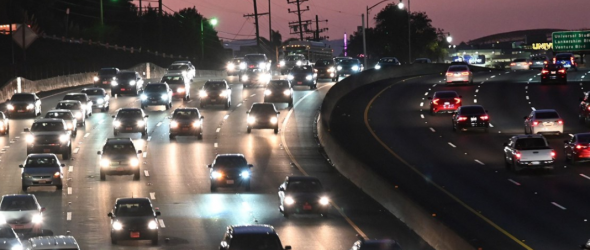California could join France, Norway and the United Kingdom in banning cars with traditional combustion engines, after Gov. Gavin Newsom’s executive order to end the sale of gas- and diesel-powered vehicles in the Golden State by 2035.
But there are plenty of obstacles, including the technical challenges of sourcing raw materials and producing enough batteries and fuel-cells, as well as the need to deliver vehicles consumers will want to buy.
“If the government tells you that you can’t build anything other than electric vehicles, consumers will have no other products to choose from,” said Sam Abuelsamid, principal automotive analyst with Guidehouse Insights. “New vehicle sales could drop precipitously, with many people choosing to just drive the the gas- and diesel-powered vehicles they have a lot longer,” he added.
So far, battery cars have generated modest sales, barely hitting 2 percent of U.S. demand, according to industry data. Even in California, the epicenter of the American EV market, the figure is just 10 percent.
However, there is growing optimism that even without new mandates, sales will surge. At the launch on Wednesday of Volkswagen’s ID.4, its first long-range electric car for the U.S., VW Group of America CEO Scott Keogh said he expects U.S. demand will reach “15 to 20 percent” by 2025, and then “spike up from there.”
Guidehouse forecasts sales of hybrids, plug-ins and BEVs will reach 1.13 million this year, 5 million by 2025, and 12.5 million in 2030.
The U.S. is far from the leader. China — which is also studying a ban on gas-powered vehicles — is now the world’s largest market for BEVs. From a percentage standpoint, however, demand in Norway has hit as high as 70 percent at times over the last several years.
The auto industry has long dragged its feet on the matter of electric vehicles, but now there’s a massive shift under way — and not just from new entrants such as Tesla, Lucid and Rivian. GM CEO Mary Barra said General Motors is on “a path to an all-electric future,” with “20 or more” BEVs planned by 2023. VW, meanwhile, targets 50 by 2025 through its various brands. Even niche players like Rolls-Royce are plugging in.
Rolls will show off its first fully electric model before the end of the year, it confirmed this week, an inevitability “if legislation forbids (owners) from driving a combustion-engined car into the center of a city” like Paris, Los Angeles or London, some of the brand’s most important markets, a spokesman for the British marque told Automotive News.
The U.S. trade group Alliance for Automotive Innovation said on Thursday that “neither mandates nor bans build successful markets,” stressing It will take broad steps bringing together regulators, manufacturers, dealers, electric utilities “and others” to make a ban succeed.
But “the good news is that things are moving in the right direction,” said Stephanie Brinley, principal auto analyst with IHS Markit.
In the U.S. alone there will be over 100 BEVs by 2025. IHS, among others, say they expect costs to plunge as battery prices fall by as much as half from what automakers pay today. Tesla CEO Elon Musk said this week this will allow launching a new $25,000 model within three years, barely half the cost of today’s Tesla Model Y.
In terms of charging up 10s or even 100s of millions of EVs, the U.S. — like many other countries — would fall short if everyone plugged in at public stations. But, today, 80 percent of EV owners use home chargers, mostly overnight, when utilities have plenty of excess capacity and many offer discount rates. That is likely to remain the norm going forward, said Pat Romano, CEO of ChargePoint, a major EV charging system provider, even as companies plan to add thousands of new charging stations.
Eventually, new capacity will be needed as more and more battery-cars take to the roads, said analyst Abuelsamid, but with 290 million vehicles in the U.S. fleet alone, the conversion process likely will take more than a decade.
The challenge will be to migrate to renewable sources, such as wind or solar, so that tailpipe emissions aren’t simply shifted to more smokestacks.
